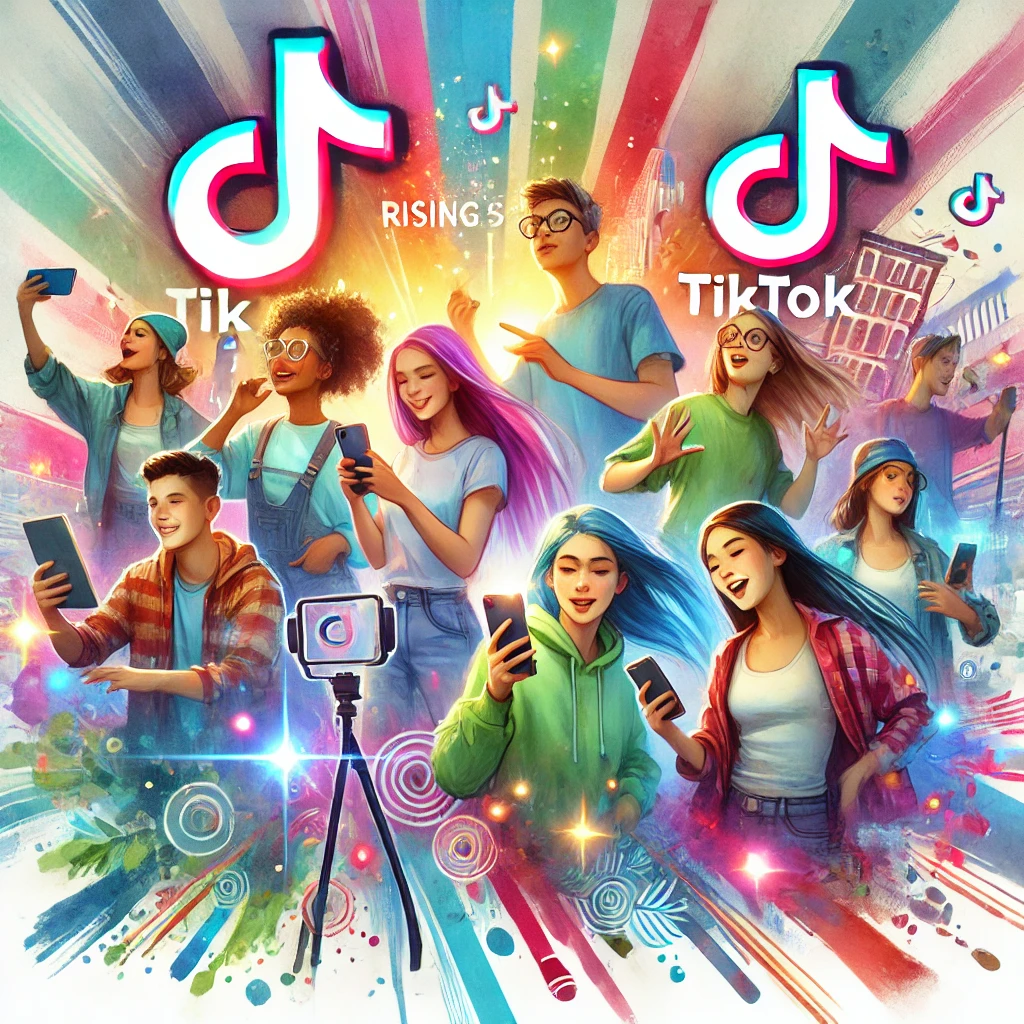You want your content to stand out. Not just in the way that makes people nod in agreement but in a way that makes them lean forward, raise an eyebrow, and say, “Wow, this was written for me!” To make this happen, you need to understand the art and science behind creating content that resonates deeply with your audience. You have to get into the minds of people, understand their desires and fears, and crafts content that makes them take action.
The magic lies in mastering not just what to say, but how to say it—and ensuring your audience feels that the content is tailored just for them. This guide will help you create compelling content that speaks directly to your audience, in a style that fit our proven strategies.
Know Your Audience Better Than They Know Themselves
Before you start crafting any content, you must understand your audience on a deep level. This is the foundation for creating material that sticks. To really speak to someone, you have to speak to their needs, desires, and fears. You have to know them better than they know themselves.
Here’s how you do it:
- Research Your Audience – Go beyond demographics. Look into psychographics—what keeps them awake at night? What motivates them? What are their unspoken desires?
- Talk to Real People – Survey your audience, interview customers, or engage in social media conversations. Your best insights often come from actual human interaction. Remember, great content is rooted in empathy, and empathy comes from connection.
- Identify Their Pain Points – Every successful piece of content is a solution to a problem or an answer to a question. What problems does your audience need solved?
BlogNation emphasizes the power of understanding people’s emotional triggers. If you can clearly articulate your audience’s problems back to them in a way that feels authentic, they’ll trust you to help solve those problems.
Craft a Captivating Hook
The attention span of the average internet user is short—less than 10 seconds, to be exact. That’s why you need to master the art of the hook. Your hook can be a headline, an opening line, or a powerful image. But whatever form it takes, it needs to grab your reader’s attention immediately.
Types of Effective Hooks
- Questions: A well-crafted question engages your audience’s brain. “Do you want to know the secret to building irresistible content?” is much more compelling than starting with a statement.
- Bold Claims: BlogNation often uses bold claims that make people pause and think. “This is why 90% of marketers fail at engaging their audience” sets a clear expectation and makes people curious.
- Personal Stories: Nothing connects like a personal story. It makes your content human and relatable. BlogNation uses stories from our own own life and work experiences to build credibility and trust.
The key is to pique curiosity right from the start. Your goal is to make your audience think, “I need to keep reading”.
Speak the Language of Your Audience
If you speak like an academic when your audience is just looking for straightforward, conversational advice, you’re going to lose them. We understand that people crave content that feels easy to digest and unpretentious. Tailor your language to suit your readers’ preferences. Here’s how:
- Mirror Your Audience’s Vocabulary – This is a powerful psychological trick. When people hear words they typically use, they unconsciously feel understood. If your audience is in the tech industry, use terms they’re familiar with—but explain them in ways that even a novice would understand.
- Focus on Benefits, Not Features – Too often, content writers focus on features. They list facts, stats, and elements of a product or service. However, audiences want to know how it benefits them. Instead of saying, “Our software has 99.9% uptime,” say, “You will never lose another night’s sleep worrying about your website going down.”
- Be Conversational – BlogNation is known for our conversational writing style, full of rhetorical questions and direct language like, “Let’s be real…” This kind of writing draws people in because it feels like they’re talking to a friend, not reading a sales pitch.
The language you use plays a key role in how you connect with your audience. Write the way they talk, think, and feel.
Solve Real Problems with Real Solutions
Your audience isn’t here to read fluffy content. They have problems, and they want solutions. The most effective content doesn’t just talk about problems—it offers actionable insights.
How to Solve Problems Effectively
- Identify One Specific Problem: The narrower the problem you solve, the more impactful your content will be. “How to Write Engaging Instagram Captions” is far better than “How to Use Instagram for Marketing.”
- Give Actionable Steps: BlogNation doesn’t just tell you to improve your marketing; we tell you how—step by step. Make your advice actionable, clear, and concise.
- Use Examples: Examples illustrate solutions better than any amount of explanation. When you say, “Craft a headline that sparks curiosity,” give them examples: “The 5 Secrets Marketers Don’t Want You to Know.”
- Anticipate Obstacles: A truly effective piece of content anticipates the obstacles readers might face and shows them how to overcome them. If someone struggles with staying consistent on social media, provide methods to schedule content ahead of time.
Your goal is to make it easy for the reader to see how they can take your content and immediately apply it to their lives.
Create Content That Evokes Emotion
Emotion is the gateway to action. When people feel something, they are far more likely to share, comment, and buy. BlogNation taps into key emotions such as curiosity, fear of missing out (FOMO), urgency, and even anger to inspire action.
Triggering Emotions in Your Content
- Use Fear and FOMO – Tell your audience what they might be missing if they don’t follow your advice. People hate missing out—tap into that.
- Inspire Curiosity – Use open loops. BlogNation uses this tactic well: we introduce an idea, and before fully explaining it, we lead you into another part of the content, making you need to keep reading to satisfy your curiosity.
- Create Empathy – Share experiences that mirror your audience’s struggles. If they feel understood, they are more likely to trust you.
- Promise Transformation – People love stories of transformation—whether that’s physical, emotional, or financial. Show your audience how your content can help them transform.
When you successfully evoke emotions, you foster a deeper connection and motivate people to engage with your content.
Master the Art of Storytelling
Storytelling is at the heart of all good content. People remember stories far longer than they remember data points. We often use stories to illustrate our points—sometimes they’re stories of our own failures and successes, and other times they’re anecdotes from others. The point is: stories sell.
Elements of Powerful Storytelling
- A Relatable Hero: The hero of your story should be someone your audience identifies with. That hero could be a past version of yourself or one of your clients. Make them relatable so the audience sees themselves in that position.
- A Struggle or Problem: Every good story involves a struggle. The struggle is often the same one that your audience is experiencing. This is what creates empathy and connection.
- A Resolution: Show how the hero overcame the struggle, ideally by following the steps you’re teaching. This ties the story back to the content.
When your audience sees themselves in the story you tell, they become more engaged. They’re not just consuming information—they’re visualizing their own journey.
Use Data to Back Up Your Claims
If emotion is the hook that grabs attention, data is the anchor that keeps it there. It’s the solid proof that adds credibility to your claims.
- Cite Reliable Sources: If you make a bold claim, back it up with evidence. BlogNation often uses industry reports, studies, and surveys to substantiate our arguments. This builds trust with your readers.
- Show the Transformation with Numbers: If you’re explaining the value of a new strategy, share results. Instead of just saying, “Our email strategy increases engagement,” show that it “increases email open rates by 25% in 30 days.”
- Use Visuals to Illustrate Data: Charts, graphs, and screenshots help people understand the data better. It’s one thing to tell people you’ve doubled your traffic—showing them a graph that illustrates that growth adds a layer of credibility.
Data shows that you’re not just talking; you’re delivering results.
Call Your Audience to Action
Great content leaves the reader with a feeling of empowerment—but that feeling must be directed. We always know where we wants our audience to go next, and we tell them.
- Be Direct: Tell your audience what you want them to do next. It could be subscribing to your newsletter, signing up for a webinar, or leaving a comment. Avoid vague CTAs like “Check it out”—be specific.
- Create a Sense of Urgency: Give people a reason to act now rather than later. “Sign up today to get exclusive bonuses” works better than “Sign up whenever you feel like it.”
- Keep It Simple: A CTA should be easy to understand and follow. Don’t overwhelm your readers with multiple actions; guide them to one clear path.
Without a compelling call to action, even the best content can leave your audience feeling a bit lost.
Optimize for SEO, But Write for People
SEO is important—it’s what helps people discover your content in the first place. But if your content doesn’t resonate with people, SEO doesn’t matter. After 20 years of doing this I know that while SEO can drive traffic, content quality keeps people engaged.
Tips for Balancing SEO and Quality
- Use Keywords Naturally: Use keywords in headlines and throughout your content, but make sure they fit naturally. Google rewards quality over keyword-stuffing.
- Create Long-Form Content: In-depth content tends to perform better in search results. Aim for detailed guides that answer multiple aspects of your audience’s question.
- Improve Readability: Use subheadings, bullet points, and short paragraphs to break down content into easily digestible pieces. Not only does this make the content easier to read, but it also signals quality to search engines.
- Answer Questions: Think about the questions your audience might type into Google, and address them directly in your content. Structured answers help you rank for featured snippets.
Remember, your ultimate goal is to create content that provides value to the reader—not just the search engines.
Consistency Is Key
One-off efforts rarely lead to massive growth. Content that speaks to your audience needs to be delivered consistently. Our success is largely due to the ability to consistently provide value over time. We build an audience by showing up, sharing insightful content, and giving people a reason to keep coming back.
- Develop a Schedule: Whether it’s a blog post every week or a social media update every day, create a schedule and stick to it. Consistency builds trust and anticipation.
- Recycle and Repurpose Content: Content creation can be time-consuming. Repurpose your best-performing content into new formats—like turning a blog post into a video or a series of Instagram posts.
- Stay Engaged: Interact with your audience, respond to comments, and keep the conversation going. BlogNation often reaches out to our audience personally, which adds a human touch that goes a long way in content marketing.
When you consistently show up, your audience will start to count on you—and that’s when true loyalty is built.
Conclusion: Build Relationships, Not Just Content
In the end, great content doesn’t just inform—it builds a relationship. Our approach to content marketing works because we understand that every piece of content is part of a larger conversation. We speaks directly to our audience’s needs, evokes emotion, and delivers actionable solutions.
To build content that speaks to your audience:
- Know who they are, what they need, and what drives them.
- Hook them right from the start.
- Speak their language and address their pain points.
- Solve real problems with actionable solutions.
- Trigger their emotions and tell compelling stories.
- Back your claims with data.
- Guide them clearly with a call to action.
- Be consistent in delivering value.
By applying these principles, you can create content that resonates deeply, keeps people coming back, and ultimately drives them to take action. Remember, the goal is to create content that transforms—not just informs.
Now, go out there and start creating content that speaks to your audience, makes them feel understood, and helps them improve their lives. That’s how you make an impact.




